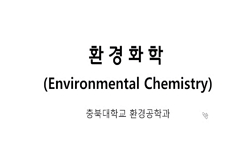Industrial effluents are major pollution-causing agents for our environment. Our study focuses on utilizing effluents from different industries for efficient production of Polyhydroxybutyrate (PHB). Presence of PHB was identified by Sudan Black staini...
http://chineseinput.net/에서 pinyin(병음)방식으로 중국어를 변환할 수 있습니다.
변환된 중국어를 복사하여 사용하시면 됩니다.
- 中文 을 입력하시려면 zhongwen을 입력하시고 space를누르시면됩니다.
- 北京 을 입력하시려면 beijing을 입력하시고 space를 누르시면 됩니다.



Polyhydroxybutyrate production accompanied by the effective reduction of chemical oxygen demand (COD) and biological oxygen demand (BOD) from industrial effluent
한글로보기https://www.riss.kr/link?id=A104465530
-
저자
K. V. Radha (Anna University) ; Ramanathan Muralidharan (Anna University) ; Pillaibakkam Bahukudumbi Sindhuja (Anna University) ; Aswathi Sudalai (Anna University)
- 발행기관
- 학술지명
- 권호사항
-
발행연도
2013
-
작성언어
English
- 주제어
-
등재정보
KCI등재,SCIE,SCOPUS
-
자료형태
학술저널
- 발행기관 URL
-
수록면
2191-2196(6쪽)
-
KCI 피인용횟수
3
- DOI식별코드
- 제공처
-
0
상세조회 -
0
다운로드
부가정보
다국어 초록 (Multilingual Abstract)
Industrial effluents are major pollution-causing agents for our environment. Our study focuses on utilizing effluents from different industries for efficient production of Polyhydroxybutyrate (PHB). Presence of PHB was identified by Sudan Black staining method. The PHB production parameters for Pseudomonas aeruginosa MTCC 4673were studied critically, and it was found that glucose with 8.5 mg/L (0.0550 g PHB/g substrate) PHB concentration yielded the highest among the carbon sources used. Peptone with 8.9 mg/L (0.0524 g PHB/g substrate) of PHB concentration,an incubation period of 48 h and at a pH of 7 yielded the optimum results. These studies were compared with those of Alcaligens latus MTCC 2311. Dairy effluents (DE) and tannery effluents (TE) were considered for the best possible substrate, for the production of PHB in an optimized media. The results indicated that the dairy effluents gave a higher yield of PHB. Amongst various dilution levels studied from 10-100% (v/v), 50% (v/v) concentration of the dairy effluent showed maximum PHB productivity of 0.0582 g PHB/g substrate. A comparison of the chemical oxygen demand (COD) and biological oxygen demand (BOD) from the results, showed a significant removal percentage of 78.97% BOD and 53.482% COD, which highlighted the importance of utilizing effluents for PHB production, in order to reduce the risk of toxic effluent discharge. FT-IR analysis was carried out to confirm the presence of PHB.
참고문헌 (Reference)
1 M. Kirithika, 2 : 1-, 2009
2 B. Senthilkumar, 76-79, 2006
3 P. A. Holmes, 16 : 32-, 1985
4 S. Y. Lee, 49 : 1-, 1996
5 S.Y. Lee, 44 : 1337-, 1994
6 A. Arun, 5 : 1524-, 2006
7 P. H. Yu, 78 : 445-, 1999
8 R. Z. Sayeed, 5 : 68-, 2010
9 E. Grothe, 25 : 132-, 1999
10 E. A. Dawes, 10 : 266-, 1973
1 M. Kirithika, 2 : 1-, 2009
2 B. Senthilkumar, 76-79, 2006
3 P. A. Holmes, 16 : 32-, 1985
4 S. Y. Lee, 49 : 1-, 1996
5 S.Y. Lee, 44 : 1337-, 1994
6 A. Arun, 5 : 1524-, 2006
7 P. H. Yu, 78 : 445-, 1999
8 R. Z. Sayeed, 5 : 68-, 2010
9 E. Grothe, 25 : 132-, 1999
10 E. A. Dawes, 10 : 266-, 1973
11 B. S. Kim, 43 : 892-, 1994
12 S.W. Kim, 18 : 25-, 1996
13 H. Preusting, 41 : 550-, 1993
14 O. Hrabak, 103 : 251-, 1992
15 K. Sujatha, 4 : 216-, 2005
16 K.W. Nickerson, 12 : 327-, 1981
17 Y. Wakisaka, 43 : 1473-, 1982
18 A. J. Anderson, 12 : 102-, 1990
19 A. Azhar, 3 : 617-, 2009
20 J. Choi, 51 : 13-, 1999
21 S. R. Pandian, 101 : 705-, 2009
22 E. A. Dawes, 10 : 135-, 1973
23 Z.T. Dobroth, 102 : 3352-, 2011
24 S. Sangyoka, 41 : 1211-, 2012
25 T. Rawate, 83 : 562-, 2002
26 R. Leaversuch, 8 : 52-, 1987
동일학술지(권/호) 다른 논문
-
Adsorption of heavy metal ions in ternary systems onto Fe(OH)3
- 한국화학공학회
- Muhammad Waseem
- 2013
- KCI등재,SCIE,SCOPUS
-
Catalytic synthesis of biodiesel from pongamia glabra over zirconia and its modified forms
- 한국화학공학회
- Sathgatta Zaheeruddin Mohamed Shamshuddin
- 2013
- KCI등재,SCIE,SCOPUS
-
- 한국화학공학회
- Mohammad Zuber
- 2013
- KCI등재,SCIE,SCOPUS
-
- 한국화학공학회
- Vahid Mahdavi
- 2013
- KCI등재,SCIE,SCOPUS
분석정보
인용정보 인용지수 설명보기
학술지 이력
| 연월일 | 이력구분 | 이력상세 | 등재구분 |
|---|---|---|---|
| 2023 | 평가예정 | 해외DB학술지평가 신청대상 (해외등재 학술지 평가) | |
| 2020-01-01 | 평가 | 등재학술지 유지 (해외등재 학술지 평가) |  |
| 2016-06-21 | 학술지명변경 | 한글명 : The Korean Journal of Chemical Engineering -> Korean Journal of Chemical Engineering외국어명 : The Korean Journal of Chemical Engineering -> Korean Journal of Chemical Engineering |  |
| 2011-01-01 | 평가 | 등재학술지 유지 (등재유지) |  |
| 2009-01-01 | 평가 | 등재학술지 유지 (등재유지) |  |
| 2007-09-27 | 학회명변경 | 영문명 : The Korean Institute Of Chemical Engineers -> The Korean Institute of Chemical Engineers |  |
| 2007-09-03 | 학술지명변경 | 한글명 : The Korean Journal of Chemical Engineeri -> The Korean Journal of Chemical Engineering외국어명 : The Korean Journal of Chemical Engineeri -> The Korean Journal of Chemical Engineering |  |
| 2007-01-01 | 평가 | 등재학술지 유지 (등재유지) |  |
| 2005-01-01 | 평가 | 등재학술지 유지 (등재유지) |  |
| 2002-01-01 | 평가 | 등재학술지 선정 (등재후보2차) |  |
| 1999-07-01 | 평가 | 등재후보학술지 선정 (신규평가) |  |
학술지 인용정보
| 기준연도 | WOS-KCI 통합IF(2년) | KCIF(2년) | KCIF(3년) |
|---|---|---|---|
| 2016 | 1.92 | 0.72 | 1.4 |
| KCIF(4년) | KCIF(5년) | 중심성지수(3년) | 즉시성지수 |
| 1.15 | 0.94 | 0.403 | 0.14 |




 KCI
KCI


